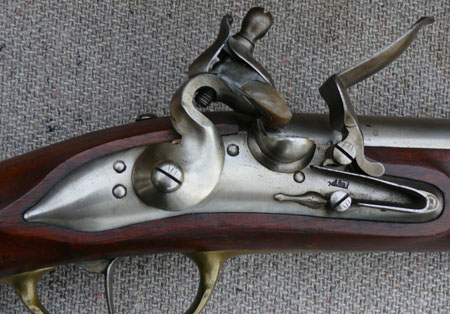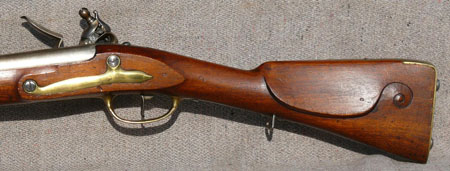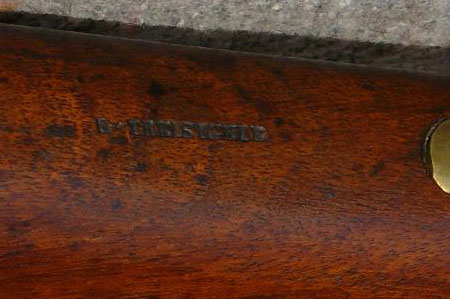M1791 infantry Musket
 I really thought I knew a bit about DkN long-guns, but then you stumble over one and you suddenly are all wrong! I was offered this beauty from Belgium, the pictures show that the condition is too god to be true. At least that was what I thought. I quickly noticed that the locking spring for the bayonet was missing and that the carving on the rear stock was all wrong and concluded t
I really thought I knew a bit about DkN long-guns, but then you stumble over one and you suddenly are all wrong! I was offered this beauty from Belgium, the pictures show that the condition is too god to be true. At least that was what I thought. I quickly noticed that the locking spring for the bayonet was missing and that the carving on the rear stock was all wrong and concluded t hat it must have been a M1774 that probably was restocked after haven been taken by the Swedes. This carving was popular in Sweden in the late 1700’s, not so in Denmark/Norway.
hat it must have been a M1774 that probably was restocked after haven been taken by the Swedes. This carving was popular in Sweden in the late 1700’s, not so in Denmark/Norway.
After some weeks I got the musket to Norway and went over it with a microscope – almost. There were a lot of weird things here. The spring for locking the bayonet was mussing, but the hole for it in the brass tip was – confirming the new stock theory. On the other hand, the stock looked so “right”! I have a fairly extensive library (recommendable if a collector) and there it was – a M1791 with carvings and all. But it did not explain the hole in the brass tip…
 But how? One question answered, only opening for a number of other. How could a 220 yo musket be in 100 % pristine condition? Where had it been all these years? What was the name stamped on the bottom of the butt?
But how? One question answered, only opening for a number of other. How could a 220 yo musket be in 100 % pristine condition? Where had it been all these years? What was the name stamped on the bottom of the butt?
I talked to the guy I had bought it from and he said that he had bought it together with a lot of other fantastic guns at a French dealer. The dealer had told him that these came from a humongous collection that was supposed to have been in a families ownership for centuries. I have tried to find out of the name (S Thiesigele?) without any success. Perhaps you can do a better job than me on this? Anyhow, the unlikely story I have arrived at is that some collector already in the 1790’s managed to negotiate “on of each” from the main weapon makers in Europe and stamped them all with his name. Not very likely, but how…? If you have any better suggestions for an explanation, mail me at .
Click on the pictures and they expand.

